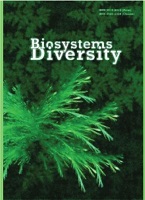Resistance of plant life forms of native and regenerated alpine plant communities to experimental trampling
Resistance of plant life forms of native and regenerated alpine plant communities to experimental trampling
Author(s): V. Piscová, A. Sedlák, M. Ševčík, J. Hreško, T. Slobodová, František PetrovičSubject(s): Agriculture, Regional Geography, Environmental interactions
Published by: Дніпропетровський національний університет імені Олеся Гончара
Keywords: experimental trampling;plant life form;alpine vegetation;Belianske Tatras Mts.;Tatra National Park;Tatra Biosphere Reserve;
Summary/Abstract: Trampling of vegetation as a result of recreation can adversely affect natural habitats, leading to loss of vegetation and degradation of plant communities. Many studies indicated that intrinsic properties of plant communities appear to be the most important factors determining the response of vegetation to trampling disturbance. Specifically, the dominant life-form of a plant community accounts for more variation in the resistance of communities to trampling than the intensity of the trampling experienced,suggesting that simple assessments based on this trait could guide decisions on access to natural sites. We verify these claims in the Belianske Tatry National Nature Reserve in Slovakia, which has been closed since 1978 due to destruction by mass tourism, with the exception of one trail made accessible since 1993. In researching the resistance of communities according to dominant life forms we adjusted the number of passes according to the minimum (75 tourists) and maximum (225 tourists) daily visitation during the tourist season. The studied communities occur in close proximity to the trails on the saddles through which the open trail passes. Available evidence from our studies suggests that vegetation dominated by hemicryptophytes is more resistant to trampling and recovers from trampling to a greater extent than vegetation dominated by other life forms. Therefore, we selected three alpine communities dominated by hemicryptophytes. In the Juncetum trifidi community, they almost completely dominate, they are mainly composed of grasses. Although they dominate the Junco trifidi-Callunetum vulgaris community, the species, Calluna vulgaris has been added to the woody chamephytes, and thus the woody Chamaephytes achieve a higher cover than in the Juncetum trifidi community. Although in the community Seslerietum tatrae biscutelletosum laevigatae hemicryptophytes dominate, it consists of several plant life forms and its grasses reach greater heights than in previous communities. We found that it is not possible to estimate the resilience of communities to trampling by dominant life forms. Life forms within one community react very similarly, but this statement cannot be generalized globally for all communities. At the same time, we found that if we damage the native community, which subsequently regenerates, the life forms of the community behave differently when damaged repeatedly. More detailed research is needed worldwide, which would point out patterns of behaviour of alpine plant vegetation to trampling.
Journal: Biosystems Diversity
- Issue Year: 31/2023
- Issue No: 3
- Page Range: 327-339
- Page Count: 13
- Language: English

